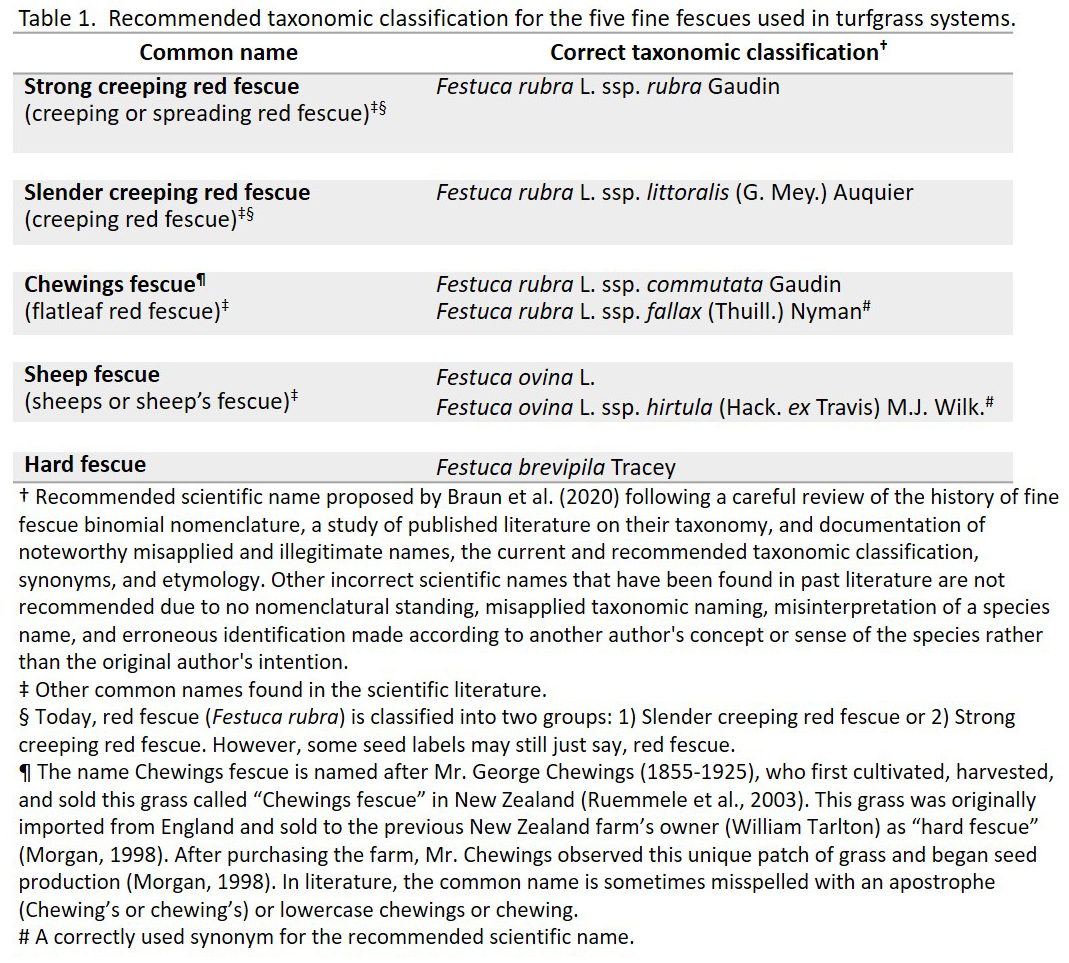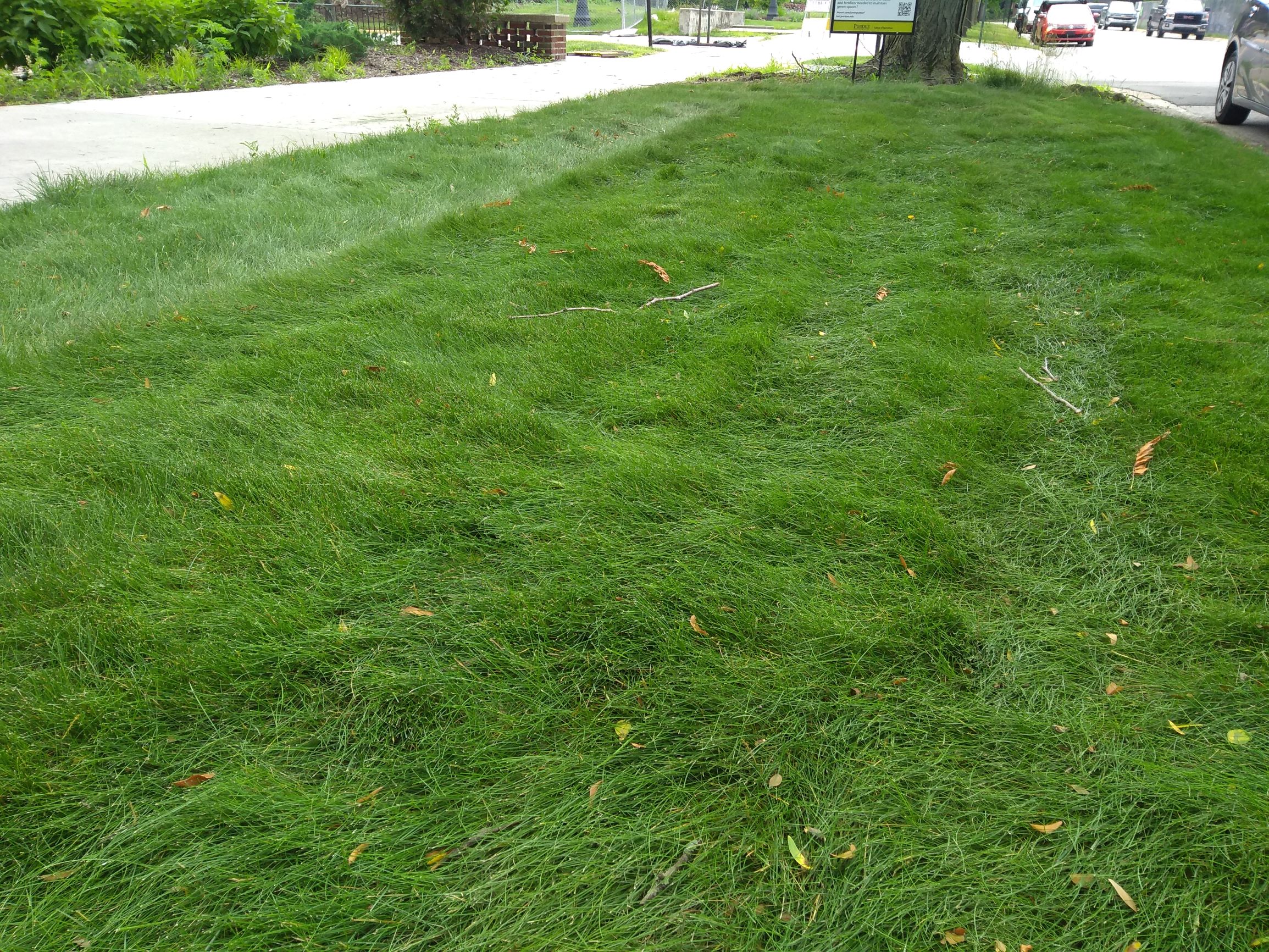By Ross Braun and Aaron Patton, Purdue University
The term “Fescue” is one that you may often hear during golf TV broadcasts or in dialogue with a person about planting, maintaining, controlling, etc. some kind of grass. However, just using the term “fescue” really doesn’t tell you much about this grass because there are many different kinds of fescues.
Festuca is a Latin word meaning stem or stalk and it is the genus (first word in scientific name) for fescue grass species. Hence, Festuca grasses are named fescue. However, recently tall fescue [Schedonorus arundinaceus (Schreb.) Dumort.; synonym = Lolium arundinaceum (Schreb.) S.J. Darbyshire; synonym = Festuca arundinacea Schreb.] and meadow fescue [Schedonorus pratensis (Huds.) P. Beauv. (formerly Festuca pratensis Huds.)] were reclassified by scientists into the genus Schedonorus, although they still retain their same common name of fescue. The wider or broad-leaved tall fescue and meadow fescue are similar, with meadow fescue being used sparingly for overseeding in warm-season turf or as a forage grass, and tall fescue commonly being used in lawns, roadsides and pastures (Figure 1).
Other fescues also often used in turfgrass systems (home lawns, commercial properties, golf courses, parks, roadsides, low-input sites, and other utility turf) include strong creeping red fescue (Festuca rubra L. ssp. rubra Gaudin), slender creeping red fescue [Festuca rubra L. ssp. littoralis (G. Mey.) Auquier], Chewings fescue [Festuca rubra L. ssp. commutata Gaudin; synonym = Festuca rubra L. ssp. fallax (Thuill.) Nyman] (see footnote on the common name of Chewings fescue in Table 1), sheep fescue [Festuca ovina L.; synonym = Festuca ovina L. ssp. hirtula (Hack. ex Travis) M.J. Wilk.], and hard fescue (Festuca brevipila Tracey) (Table 1). These five fescues are often grouped together and called “fine fescues” because of their similar appearance of narrow (fine or bristle) leaves, which means they are difficult to distinguish from one another (Figures 2, 3, and 4). There are many other fescues besides these, but they are not commonly used in turf systems. An example is blue fescue (Festuca glauca Villars, non Lamarck.), which is more commonly found as an ornamental grass.
There is a lot of confusion and debate regarding the scientific (taxonomic) classification of fine fescues (Table 1). Recently, the team of researchers working on this grant "Increasing Low-Input Turfgrass Adoption Through Breeding, Innovation, and Public Education", from the USDA-NIFA through the Specialty Crop Research Initiative has put together an exhaustive scientific review of the fine fescue turf species that clearly documents differences in growth, production, establishment, management, utilization, pest tolerance, and stress tolerance of fine fescues (Braun et al., 2020). In the review by Braun et al. (2020), the recommended taxonomic classification is presented (Table 1) to bring greater clarity and accuracy to the use of scientific names for these grasses in the future.
Acknowledgements
This project was supported by the National Institute of Food and Agriculture, U.S. Department of Agriculture, Specialty Crops Research Initiative under award number 2017-51181-27222.
References
Braun, R.C., A.J. Patton, E. Watkins, P. Koch, N.P. Anderson, S.A. Bonos, and L.A. Brilman. 2020. Fine fescues: A review of the species, their improvement, production, establishment, and management. Crop Science, in press. doi:10.1002/csc2.20122
Morgan, A. 1998. The Chewings story. TurfNews 22(6):33-35.
Ruemmele, B.A., J.K. Wipff, L. Brilman and K.W. Hignight. 2003. Fine-leaved fescue species. In: M.D. Casler and R.R. Duncan, editors, Turfgrass biology, genetics, and breeding. Wiley, New York. p. 129-174.







